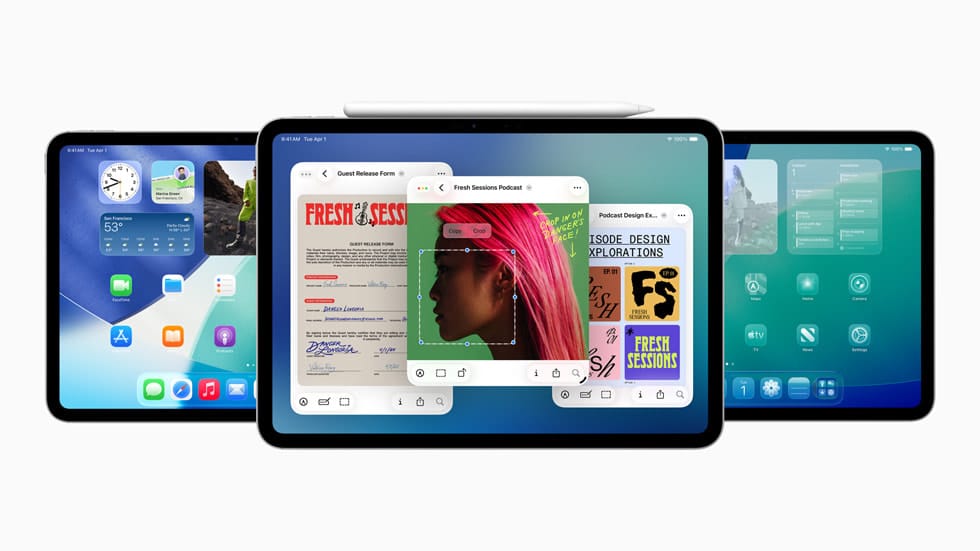Apple’s latest iPad software update turns the popular tablet into something much closer to a Mac, marking a major shift in the company’s approach to its tablet line. The new iPadOS 26, unveiled at Apple’s Worldwide Developers Conference (WWDC), introduces Mac-style windows, menus, and multitasking features that fundamentally change how iPads work.
The update introduces a completely new windowing system that lets users freely resize app windows, place them anywhere on screen, and switch between multiple apps – just like on a Mac. Windows now have the familiar “traffic light” controls (close, minimize, maximize) in the corner of each window, matching the Mac experience.
Craig Federighi, Apple’s Senior Vice President of Software Engineering, called iPadOS 26 “our biggest iPadOS release ever,” but even he acknowledged the long-standing user demand for these features with a hint of sarcasm during the presentation.
The shift raises important questions about the iPad’s identity. When first introduced in 2010, the iPad offered a simpler alternative to traditional computers – one app at a time, full-screen, with touch controls. Now, 15 years later, Apple has essentially turned it into a touchscreen Mac.
Similar Posts
The update brings several Mac-inspired features to iPad:
- A menu bar that appears at the top of the screen with app-specific options
- Window tiling that lets users arrange windows with a simple flick
- Exposé view to see all open windows spread out at once
- An enhanced Files app with resizable columns and folder customization
- The Preview app, bringing Mac’s PDF viewing and editing to iPad
These changes come after years of Apple gradually adding more productivity features to iPads, especially the Pro models that now share the same powerful chips as Macs. Previous attempts at windowed multitasking, like Stage Manager introduced in iPadOS 16, received mixed reviews for being limited and buggy.
Federighi explained why it took so long to bring Mac-like features to iPad: “Over time the iPad’s gotten more powerful, the screens have gotten larger, the user base has shifted into a mode where there is a little bit more trackpad and keyboard use.” He added that “the stars kind of aligned” to make these Mac-like features possible while still meeting “iPad’s basic contract” as a touch-first device.
The new multitasking system will work on more iPad models than Stage Manager did, though older and cheaper iPads will have some limitations in how many windows can be active at once.
Despite becoming more Mac-like, Federighi insists that “iPad’s gonna be iPad” in areas where the Mac approach doesn’t make sense for a touch-focused device. The question remains whether users wanted this convergence or if Apple has abandoned what made iPad special in the first place.
iPadOS 26 will be available this fall for most recent iPad models.







